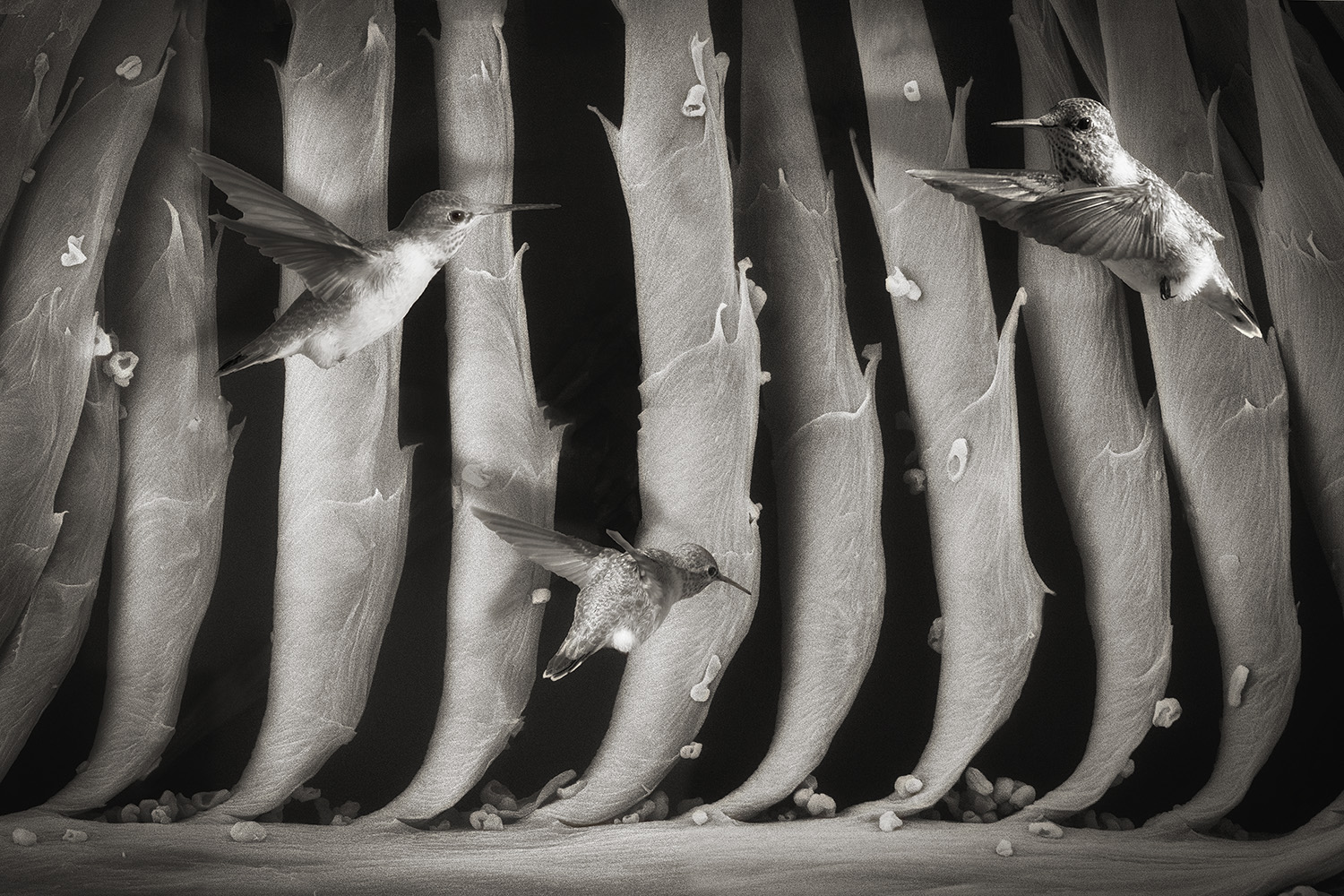Robert Dash | Micro Climate Change
Robert Dash’s project, Micro Climate Change, is a surreal articulation of nature’s response to forceful stimulus from human activity. In this series, natural objects inhabit landscapes of miniature details from their own bodies, challenging our sense of scale and our perception of embodiment.
The living objects we encounter here were, for the most part, found on less than one acre of land. Yet, an excursion through these photomontages feels as if one might be exploring an intricately curated cabinet of curiosities, each image drawing us into a microscopic world, leaving us wondering what else might lie in the vast, as yet unexplored universe we have wandered into. - Editor
Click on the images below to see the complete image in full screen.
What brought you to photography?
I became interested in photography in high school when my friend and I would explore old barns, woods and streams with our cameras, and then develop our images in a darkroom.
Who are your photographic influences?
There are many photographers who have inspired me over the years:
Chris Jordan, for his remarkable series, "Running the Numbers", in which he blends the huge picture with the miniature, both in fact and metaphor.
Jerry Uelsmann, for his creative approach to composites and photomontage. His naming of photo elements as "assets" that can be combined in compelling ways.
Karl Blossfeldt for his eye for detail with the patterns and textures of plants.
Edward Weston for his black and white imagery and stark contrast between background and sensuous natural objects.
Minor White for his black and white work, and his comment, “One should not only photograph things for what they are but for what else they are.”
Tell us about the steps and processes that go into making your photographs.
This series features photomontages, combining life-sized images of natural objects with microscopic parts of themselves. Many of these objects were found on the 3/4 acre property where I live. I've taken hundreds of objects to the electron microscope, and the ones that really inspire me in terms of patterns, textures or mysterious structures become candidates for the next step: making a portrait of the life-sized bird, leaf, berry, or flower. Then it's a matter of composition, which takes a lot of trial and error until I feel the story/image "works."
What does being a photographer bring to your life?
Photography is a tool to explore and communicate beauty, awe, and the intersection of science and art, fact and metaphor. It helps me combine my love of nature with my desire to help protect it, in an art form that is easily shared.
What is this project about?
We humans are busy going about our lives, while nature is in shock from the choices that we make. This series is about how nature responds to climate change from a micro perspective. As a career educator, lifetime fan of tiny nature, and photographer, I'm compelled to interpret these issues in a new way. Here are some of the climate change stories that these images hint at:
Marine life suffers from hot, acidic waters
Insects push their range and carry disease
More pollen brings more asthma and allergies
Crops shrivel before they feed us
Leaf pores close and trees die
Seasons shift and leave pollinators out of sync
Invasive species force out natives
Crops have smaller yields and fewer nutrients
Diatoms are under stress
Each image was made with a scanning electron microscope, and features natural objects scaled at several times smaller than a pinhead. Most of the images are photomontages with DSLR macro photography, to allow a surreal conversation between natural objects, and minute details of themselves.
What from your biography influenced this project?
I've been a fan of small nature since I was a child, collecting frogs, tadpoles and salamanders from the woods and creeks behind my house. I studied environmental science and education, spending 25 years as an educator. Sharing photography is like pointing out hidden beauty and details on an interpretative trail hike. Having access to a scanning electron microscope has helped me take that to a new level.
Follow:
Web: http://www.robertdashphotography.com












